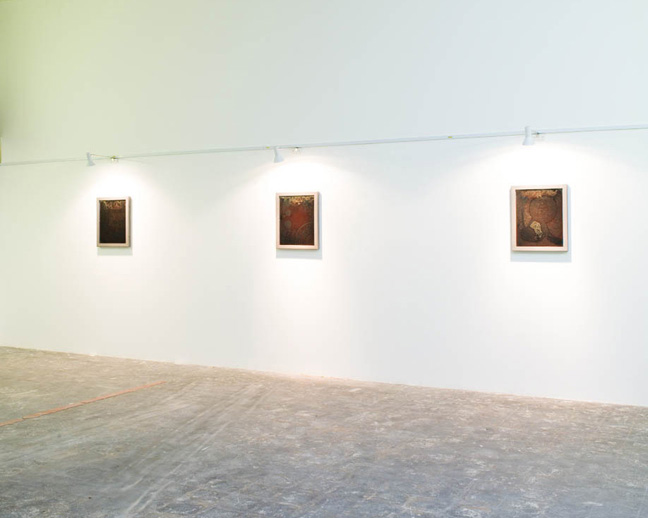Recognizing the mistakes we, as one of the dominant species on earth have made since industrial revolution by encouraging carbon-based technologies is a painful contrition. We are now officially living in Anthropocene epoch that leaves a relevantly significant footprint on geological scale. Homo sapiens are drastically changing the planet they are living on by progressively magnifying the technologies invented 20 decades ago. Human’s desire exaggerated the damaging progress and it is showing on spreading carbon footprints and rising sea level. It is obvious that the science and technology we are living on since then might be leading us to a major catastrophe in near future.
Human has created such a huge archive of technologies which are arguably a trigger for Anthopocene epoch. However, without breakthroughs in nanotechnology and biotech which again initiated by military and astronomical purposes, we are not able realize the dogmatic solution that nature has been providing us. Architects and inventors are constantly looking for morphological solution from the nature. We could now manipulate biotech at nano level and trigger a series of events that might create vast changes in every aspect of life. Understanding how nature works at complexity science level as described by Rachel Armstrong is promising enough to ensure our creations blend into the whole ecosystem without creating rejection by nature. By taking the environment as a body system, putting up any man-made creation should be taking as transplanting a new organ to a body. We desperately need a paradigm shift from the current technological ambience.
The arrival of Anthropocene epoch also means the end of Darwinian Age as described by Freeman Dyson. Genomic breakthrough of Craig Venter’s Synthetic Genomic Institution by creating an organism out of four basic chemicals in his laboratory marked a significant footstep on Post-Darwinian Age where life is no longer being created by nature or evolution but could be created artificially by human being. Biomimicry movements in robotic, computer science as well as architecture show that human is finally accepting rules and picking up wisdoms by nature that has been ignored. Therefore, applying biological understanding or mimicking behaviors from nature is not a trend but a necessity to create a more sustainable environment with the principles that have been forgotten. It is an act of atonement.
The project is being developed in the Post-Darwinian atmosphere where artificial evolution is possible and cybernetic principles as its ground. Choosing a potential biological material out of the ‘toolbox’ provided by nature that could be manipulated it in architectural context is the first stage of the methodology. Understanding its behaviors and giving it a right task to achieve desired result is the next. The research on a particular type of phytoplankton called diatom as an architectural material was inspired by its natural behaviors and biological characteristics. It is the only creature on earth that uses silicon to build its silica skeleton (frustules), the primary constituent of glass. Silicon is also found in human connective tissues, bones, teeth, skin, eyes, glands and organs. Therefore it is not surprising that the initial studies on creating artificial human bones as structural material leads to the studies on diatom. Apart from the fact that diatoms around the world carry out photosynthesis and produce 23% of oxygen in the atmosphere, it has approximately 40% of genetic structure that is shared by bacteria, which makes diatoms highly compatible and exists in almost all the aqueous mediums on earth. Not to mentioned their beautiful and complicated structural morphology at nano-scale that has been adored by artists and architects. German biologist, Ernst Haeckel (1834-1919) had produced large amount of illustrations on different kind of diatoms through his microscope. However, the existence of diatoms as suggested by fossil diatoms dates from the early Jurassic period.

Casa diatom which acts as a ‘diatomarium’ demonstrates and simplifies the methodology to grow diatoms thus manipulates its biological behaviors to find out the potential and limitation for architectural application. It is as straight forward as experimenting the hybridization of raw materials like limestone, calcium, silicon, iron and aluminum in creating a man-made binder called cement, then with right mixture of sand, gravel and water it becomes concrete that provides certain characteristics that could be manipulated in construction. Similarly, it is just the matter of time to domesticate this organism as a material that might be acting like living circuits which could be “grew” into different forms of appearance in architecture.
However, the project was not intended to create a perfect model or system but rather in searching of right ingredients from the nature palette and putting them into relevant positions to generate sustainable role in architectural environment. It is a very small step towards how architecture should be responding in the context of Post-Darwinian Age. The project is being positioned within presumably ethical parameters where the material is born out of nature with cybernetic hybridization or artificial evolution, then symbiosis into a controlled architectural environment, even though the realization might be limited by the scale and growing time of the organism, breakthroughs in genetic technology is constantly providing optimistic motivation in design with the use of living materials as an initial design consideration.



















